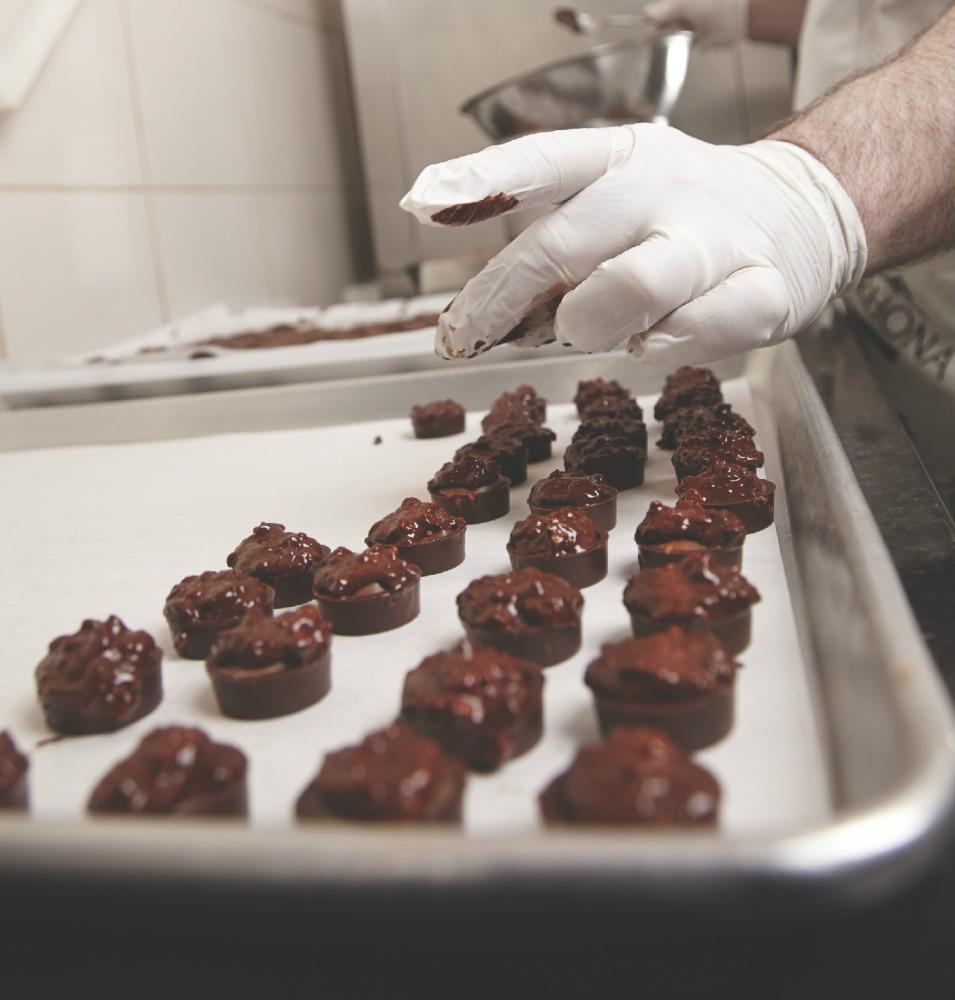Photography by Aaron Pedersen/3Ten
The cacao beans behind chocolate have been cultivated since around 500 A.D. Along with potatoes and corn, chocolate is a pre-European-contact Meso-American food item that’s now enjoyed everywhere. Cacao is often mistaken for cocoa, which is actually the by-product of the bean – when the bean is processed and made into butter or powder. The Olmecs and Aztecs used cacao mainly in a drink that, without sugar or cream, bore little resemblance to today’s hot chocolate, according to Rachel Pereira, assistant retail manager at Kerstin’s Chocolates.*
“The drink was made with corn meal and spices, and the Aztecs used it in religious ceremonies,” Pereira says. The beverage later became widespread and Spanish accounts from the 1500s report that people in South America used cacao seeds as currency.
Marianne Stover, who is co-managing the downtown store with Pereira while owner Kerstin Roos travels the world’s chocolate hotspots, adds that the Aztec ruler, Montezuma, was said to have drank cacao for his virility, one example of chocolate’s renown as an aphrodisiac. “And chocolate contains theobromines,” Stover says. “They act on the central nervous system to speed up the heart.”
In Europe, it was mostly only the aristocracy who enjoyed chocolate until the 1800s, when industrial processing brought down the price and put chocolate within reach of more people. And, that processing hasn’t changed much to this day.
AtSweet Lollapalooza, passersby can watch owner and chocolatier Brett Roy.
First, the seeds are pulled from pulp inside lumpy, nearly football-sized cacao pods. Then they’re fermented and dried for shipping and processing elsewhere. Stover says that 95 per cent of the world’s chocolate comes from
high-yield forastero crops. At Kerstin’s, mostof the chocolate is made from lower-yield criollo beans. She says that criollo is a more complex flavour to forastero’s single note.(The third category of cacao is trinitario.)Kerstin’s chocolatier, Rebecca Grant, tempers the imported chocolate to perfect the consistency and sheen, and makes the Kerstin’sline of bars and bonbons.
